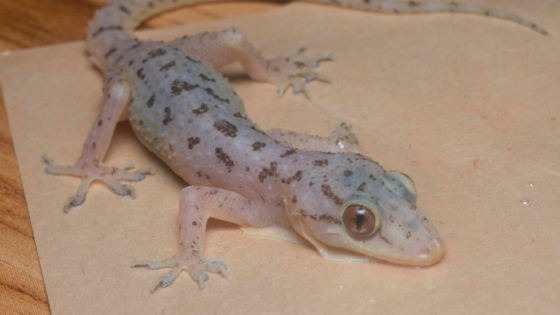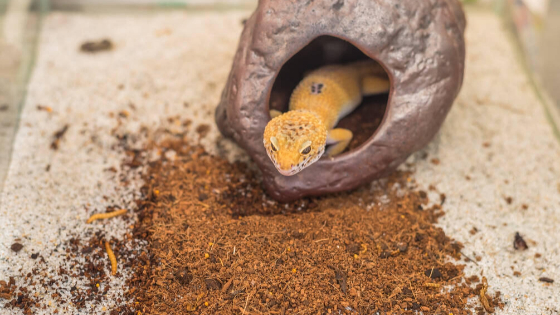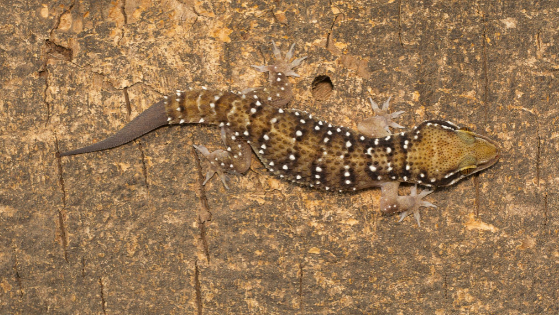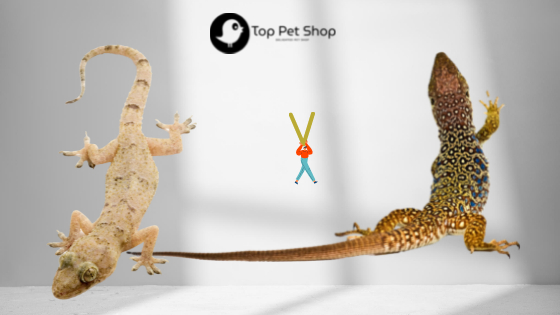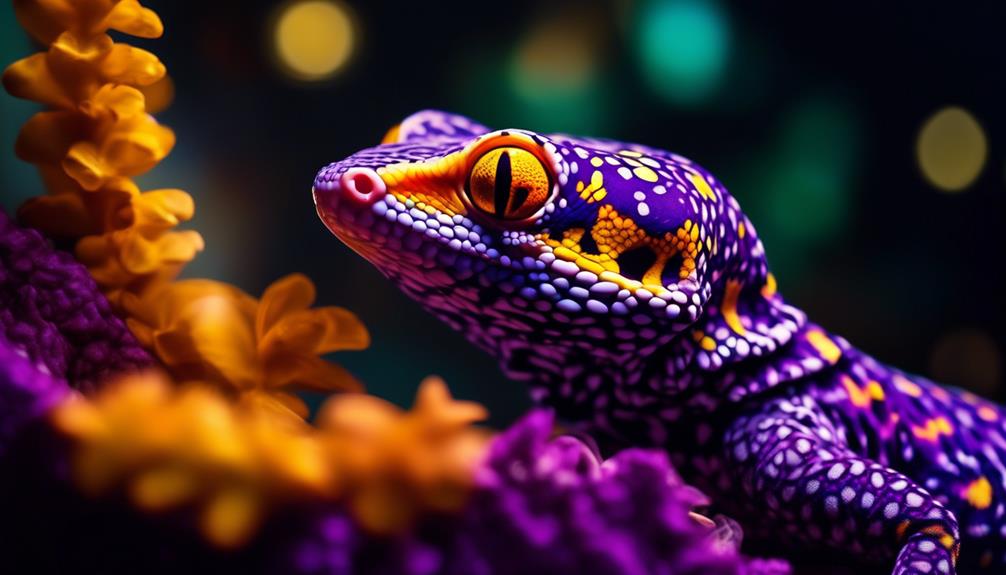
Leopard geckos have become the darlings of the reptile pet trade, captivating both experienced enthusiasts and newcomers alike. With their vibrant colorations and unique patterns, these small lizards have earned a well-deserved spot in the hearts and homes of many.
However, there is more to leopard geckos than meets the eye. From their fascinating behavior and intriguing defense mechanisms to the ethical concerns surrounding their breeding and impact on wild populations, there is a world waiting to be discovered.
So, let's embark on a journey into the colorful stars of the pet trade and uncover the secrets that lie within the realm of leopard geckos.
Key Takeaways
- Leopard geckos are native to south-Asian Afghanistan, Pakistan, India, Nepal, and Iran, and they inhabit arid and semi-arid areas with sparse vegetation and rocky habitat.
- Leopard geckos are generally nocturnal and can obtain heat from rocks, making them crepuscular or cathemeral.
- Leopard geckos have the ability to synthesize vitamin D3 through UVB exposure and have unique characteristics such as spotted coloration and the ability to replace their teeth every 3 to 4 months.
- Leopard geckos are opportunistic predators, eating a variety of prey items, with invertebrates making up the majority of their diet. They also have defensive mechanisms such as cryptic coloration and remaining hidden during the daytime.
Taxonomy and Distribution
Leopard geckos, scientifically known as Eublepharis macularius, were first described by zoologist Edward Blyth in 1854, and they are distinguished from other geckos by the presence of eyelids. These small lizards are native to south-Asian Afghanistan, Pakistan, India, Nepal, and Iran, where they inhabit arid and semi-arid areas with sparse vegetation and rocky habitat.
There are five recognized subspecies of E. macularius. Leopard geckos are primarily nocturnal, becoming active at dusk. They can obtain heat from rocks and may exhibit crepuscular or cathemeral behavior. In the wild, there is ongoing debate about their social behavior.
Leopard geckos have the ability to synthesize vitamin D3 through UVB exposure. They have spotted coloration and thick tails, making them easily recognizable. With their fascinating biology and unique characteristics, leopard geckos have become popular pets in the reptile pet trade.
Behavior and Characteristics
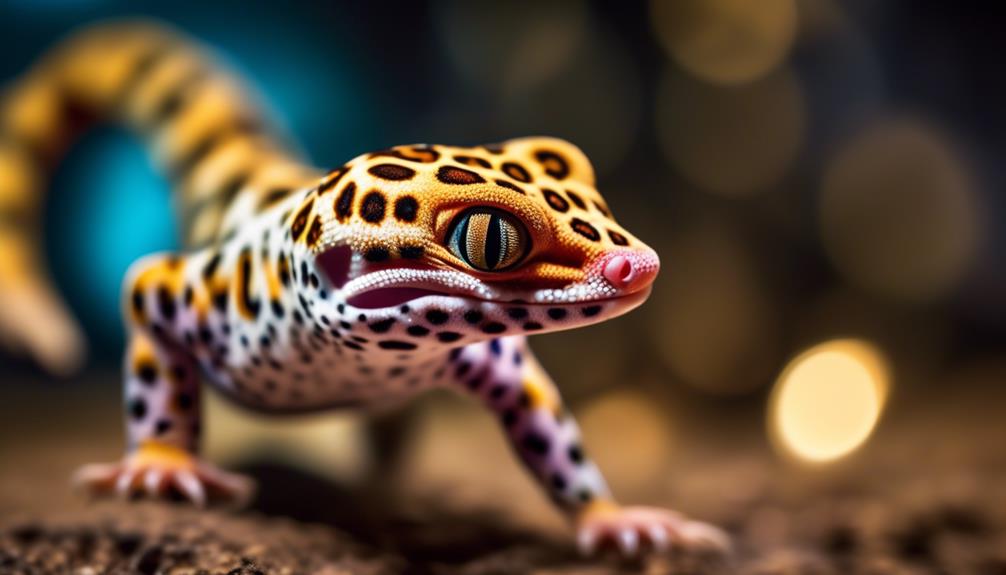
During the night, leopard geckos become active and display various behavioral and physical characteristics. As nocturnal creatures, they are most active during dusk and dawn, utilizing their heat-sensing ability to find prey and navigate their surroundings.
Leopard geckos have the unique ability to store fat in their tails, which they use as an energy reserve during times of scarcity. They are also known for their distinctive spotted coloration, which acts as camouflage in their natural arid and rocky habitats.
Additionally, leopard geckos have the remarkable ability to regenerate lost tails, a defense mechanism against predators. These small lizards have a docile temperament and are easily handled, making them popular pets among reptile enthusiasts.
Diet and Defense Mechanisms
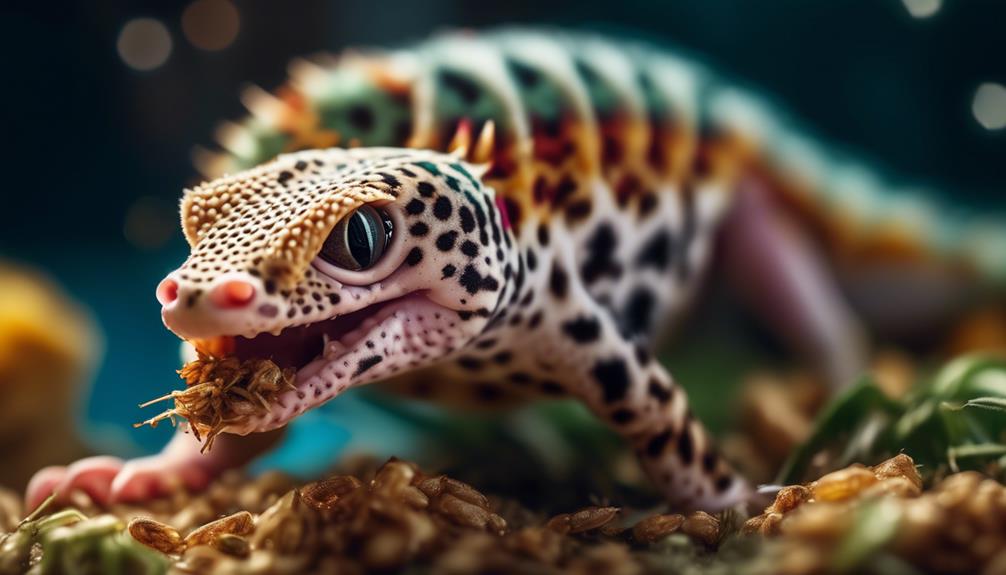
As opportunistic predators, leopard geckos have a diverse diet consisting primarily of invertebrates. They are known to consume a variety of prey items, with invertebrates making up the majority of their diet. This includes insects such as crickets, mealworms, waxworms, and roaches. Leopard geckos can also consume small vertebrates, including small lizards and baby rodents, and they have been known to cannibalize if poorly fed.
In terms of defense mechanisms, leopard geckos have developed certain strategies. They possess cryptic coloration, allowing them to blend into their surroundings and remain hidden during the daytime. This helps protect them from potential predators. Additionally, their ability to shed their tail, known as autotomy, can serve as a distraction or deterrent to predators.
Reproduction and Sexual Dimorphism
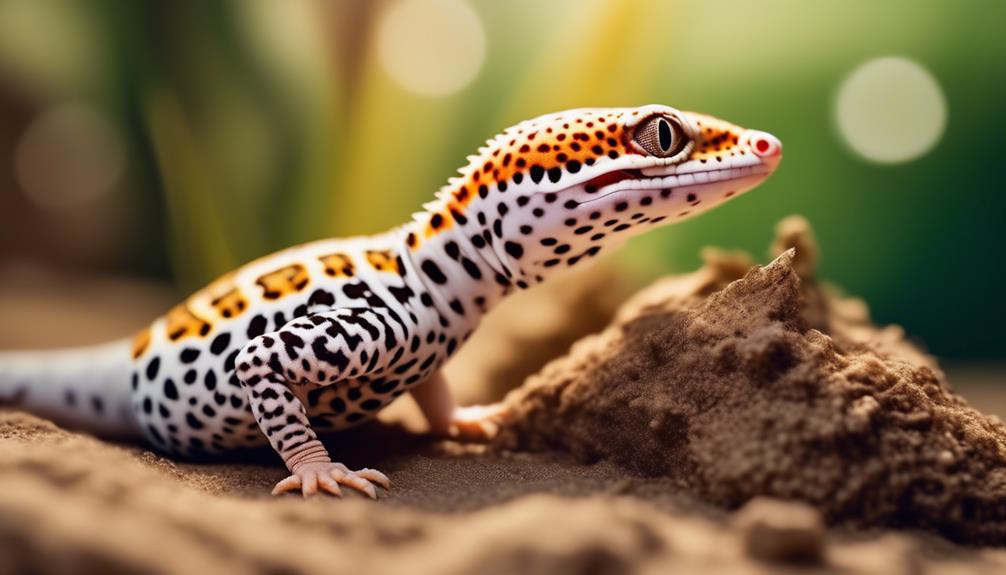
Breeding in leopard geckos occurs primarily during the summer months, with females capable of storing sperm and producing multiple clutches. Each clutch typically contains about 6-8 eggs, which have an incubation period of 35 to 89 days. The temperature at which the eggs are incubated determines the sex of the offspring, with higher temperatures resulting in more males and lower temperatures producing more females. Sexual dimorphism is present in leopard geckos, with males exhibiting pre-anal pores and hemipenal bulges. This distinction allows for easy identification between the sexes. To provide a visual representation, here is a table showcasing the key differences between male and female leopard geckos:
| Male Leopard Gecko | Female Leopard Gecko |
|---|---|
| Pre-anal pores | No pre-anal pores |
| Hemipenal bulges | No hemipenal bulges |
Understanding the reproductive behavior and sexual dimorphism in leopard geckos is crucial for breeders and enthusiasts alike.
Leopard Geckos as Pets and Reptile Pet Trade
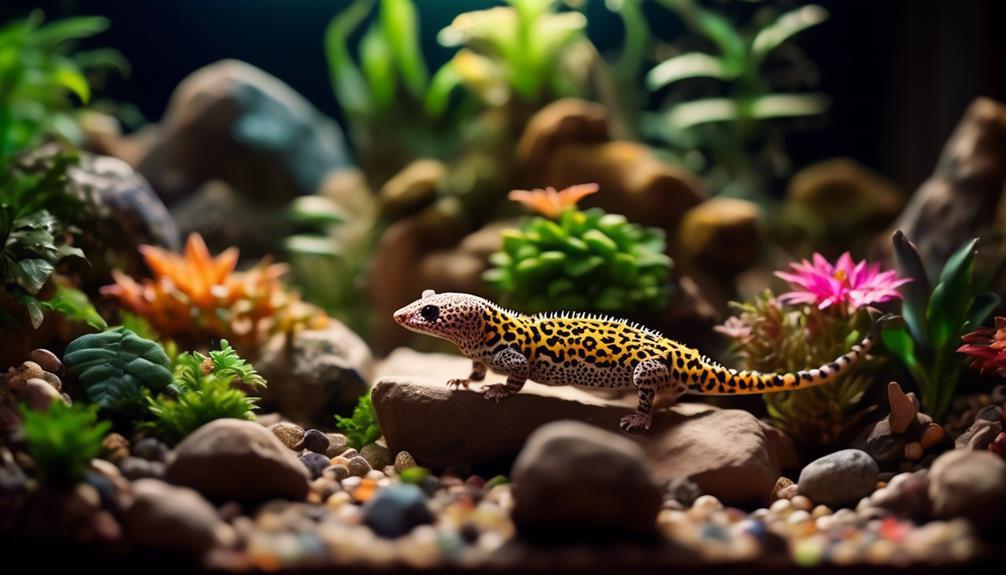
Leopard geckos have gained significant popularity as pets and are commonly found in the reptile pet trade. As captive-bred animals, they are preferred over wild-caught specimens. This has led to a wide range of colors and patterns in the captive population, making them visually striking compared to their wild counterparts. However, the increasing popularity of leopard geckos in the pet trade raises concerns about ethical breeding practices and the potential impact on wild populations.
Responsible pet ownership and education are crucial in ensuring the welfare of these reptiles. The captive breeding of leopard geckos has resulted in a diverse array of vibrant colorations. The reptile pet trade has witnessed a surge in the demand for leopard geckos, emphasizing the need for responsible practices and conservation awareness.
Frequently Asked Questions
How Long Do Leopard Geckos Typically Live in Captivity?
Leopard geckos typically live around 10 to 20 years in captivity. However, with proper care, nutrition, and a suitable environment, they can exceed 20 years. Factors such as genetics, diet, and husbandry practices can impact their lifespan.
What Are Some Common Health Issues or Diseases That Leopard Geckos May Experience?
Some common health issues or diseases that leopard geckos may experience include metabolic bone disease, respiratory infections, parasites, and shedding problems. Regular veterinary check-ups, proper husbandry practices, and a balanced diet can help prevent these issues.
Can Leopard Geckos Be Housed Together or Do They Need to Be Kept Alone?
Leopard geckos should be housed alone as they are generally solitary animals. Keeping them together can lead to aggression, stress, and potential injury. Providing individual enclosures with appropriate temperature, humidity, and hiding spots is essential for their well-being.
Are Leopard Geckos Good Pets for Beginners or Are They More Suitable for Experienced Reptile Owners?
Leopard geckos can be suitable pets for beginners due to their ease of care, docile nature, and low maintenance requirements. However, proper research, handling, and husbandry practices are essential for ensuring their well-being and longevity.
How Often Do Leopard Geckos Shed Their Skin and What Is the Best Way to Assist Them During the Shedding Process?
Leopard geckos typically shed their skin every 4-6 weeks. To assist them during the shedding process, provide a moist hide or box filled with damp moss or paper towels. This helps to create a humid environment that aids in the shedding process.
Are Leopard Geckos and Gargoyle Geckos Similar in Care and Maintenance?
Yes, leopard geckos and gargoyle geckos have similar care and maintenance requirements. Both species need proper lighting, heat, and humidity levels to thrive. However, it’s important to note that enchanting gargoyle geckos nature’s are arboreal and require more vertical space compared to their ground-dwelling leopard gecko counterparts.
Conclusion
In conclusion, leopard geckos have become highly sought-after pets in the reptile pet trade due to their vibrant colorations and unique patterns. Captive breeding has allowed for a wide range of colors and patterns that are not typically found in their wild counterparts.
While the popularity of leopard geckos as pets brings joy to many enthusiasts, responsible pet ownership and education are crucial in ensuring the well-being of these captivating creatures and minimizing the potential impact on wild populations.

